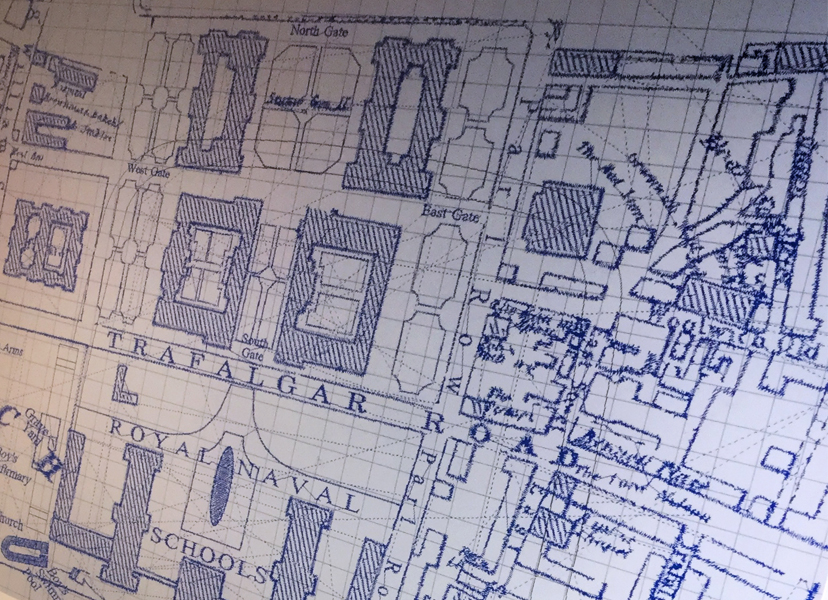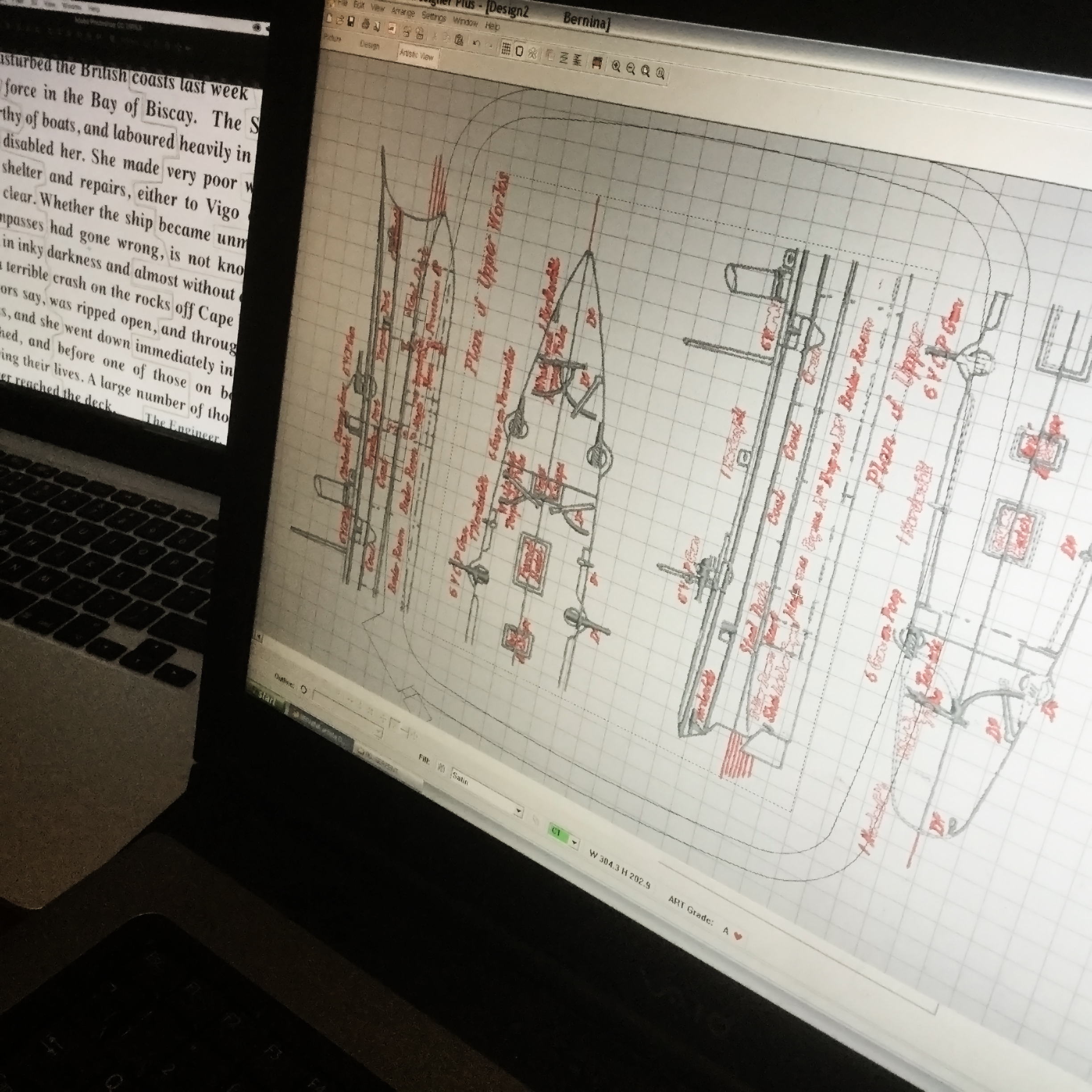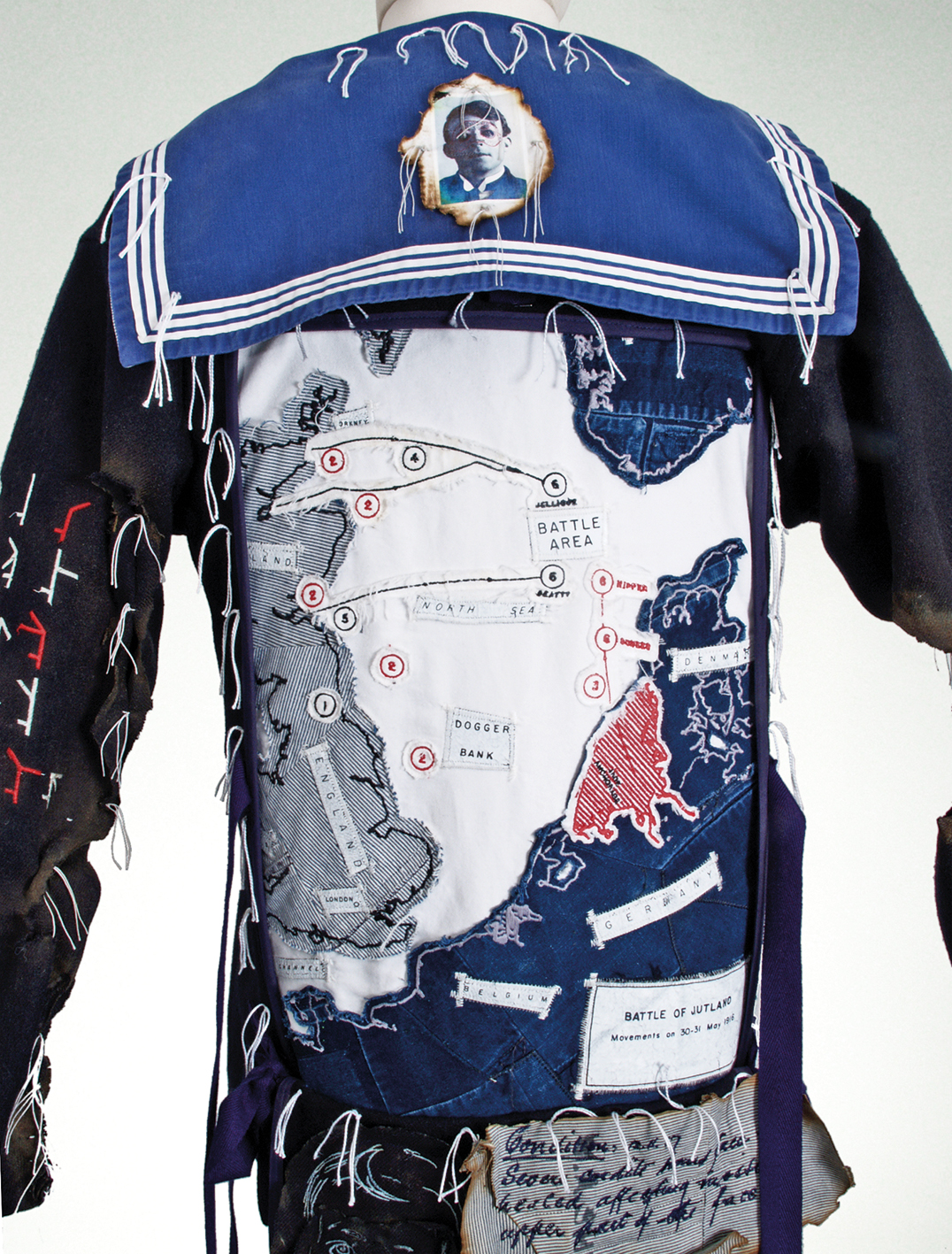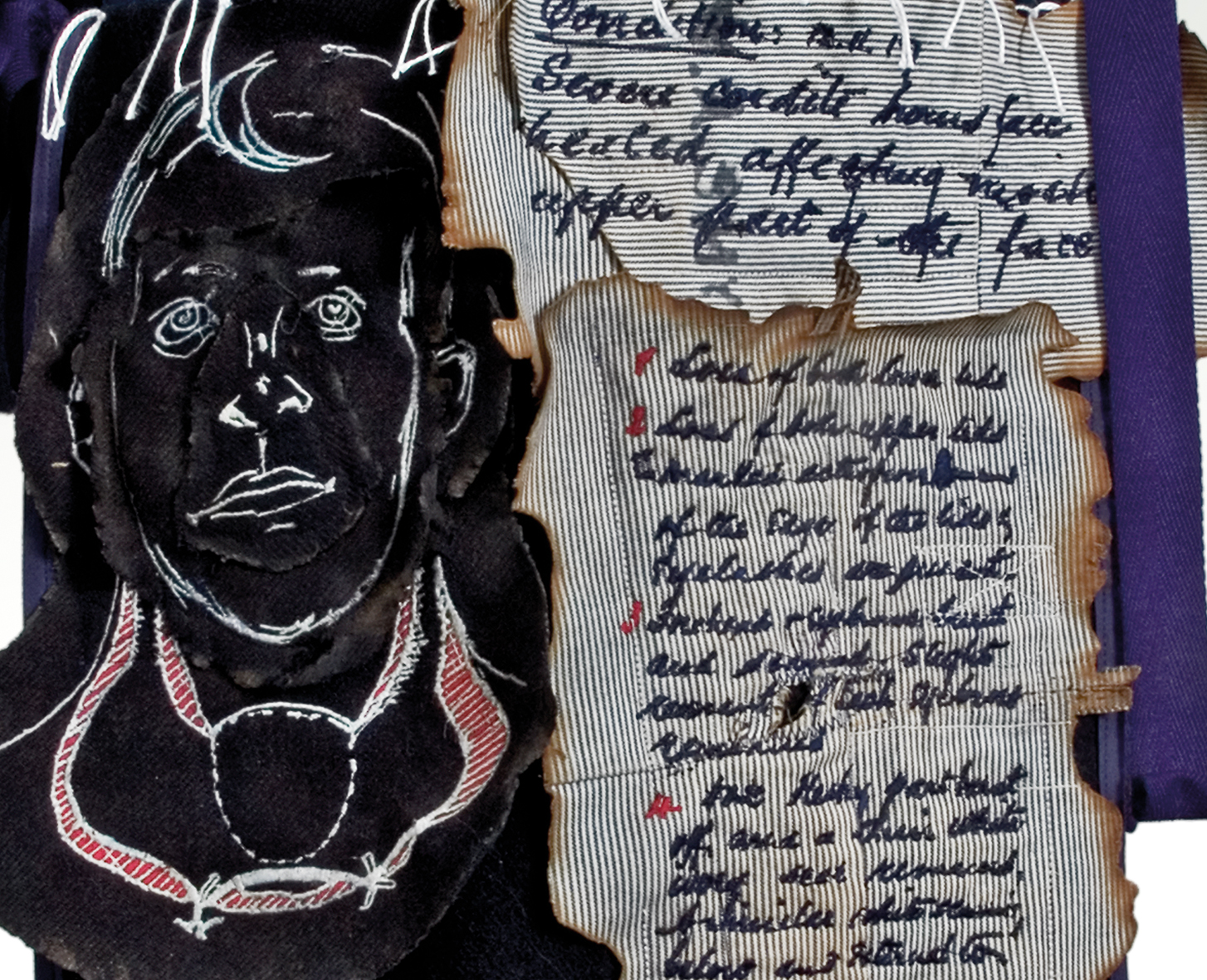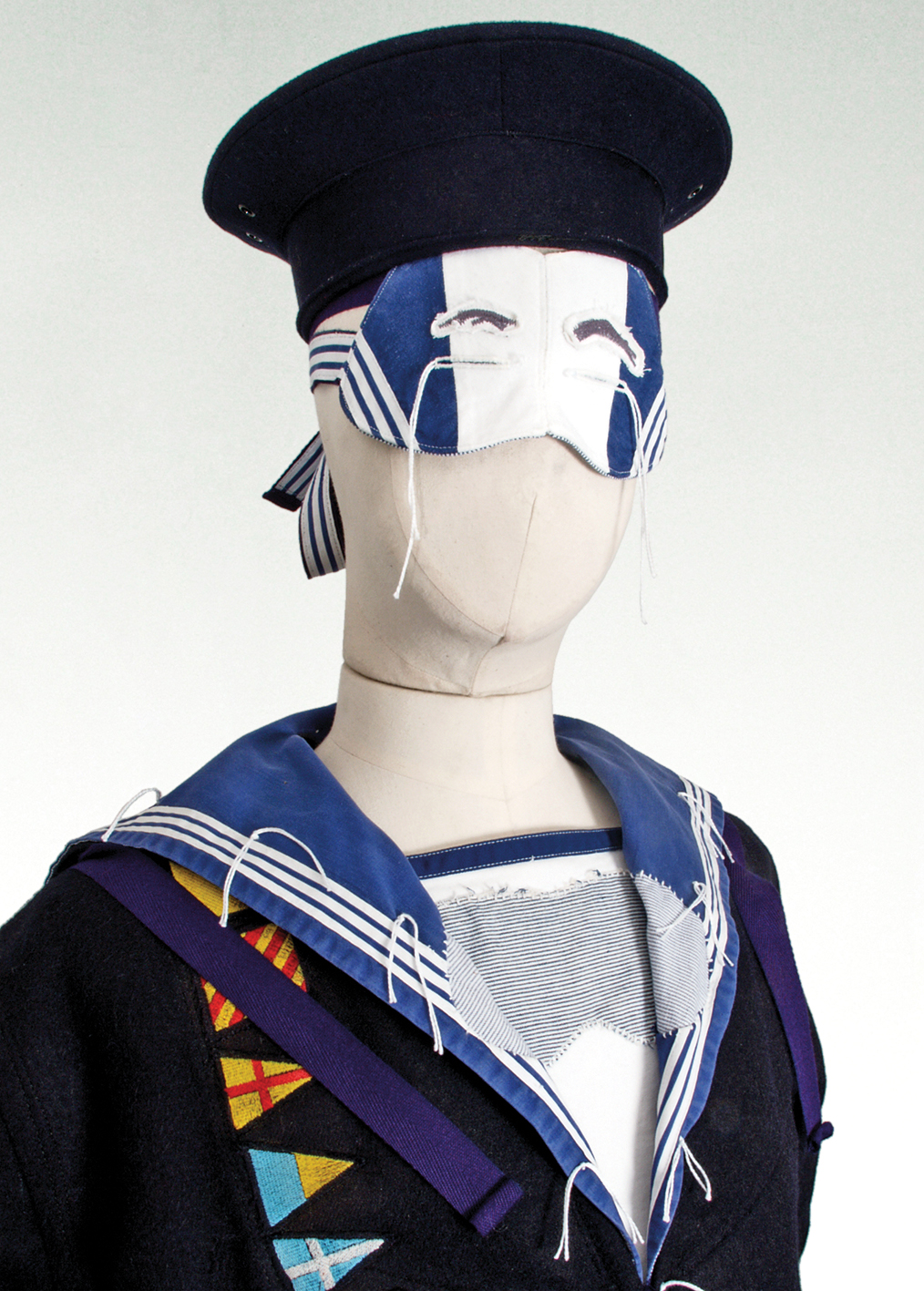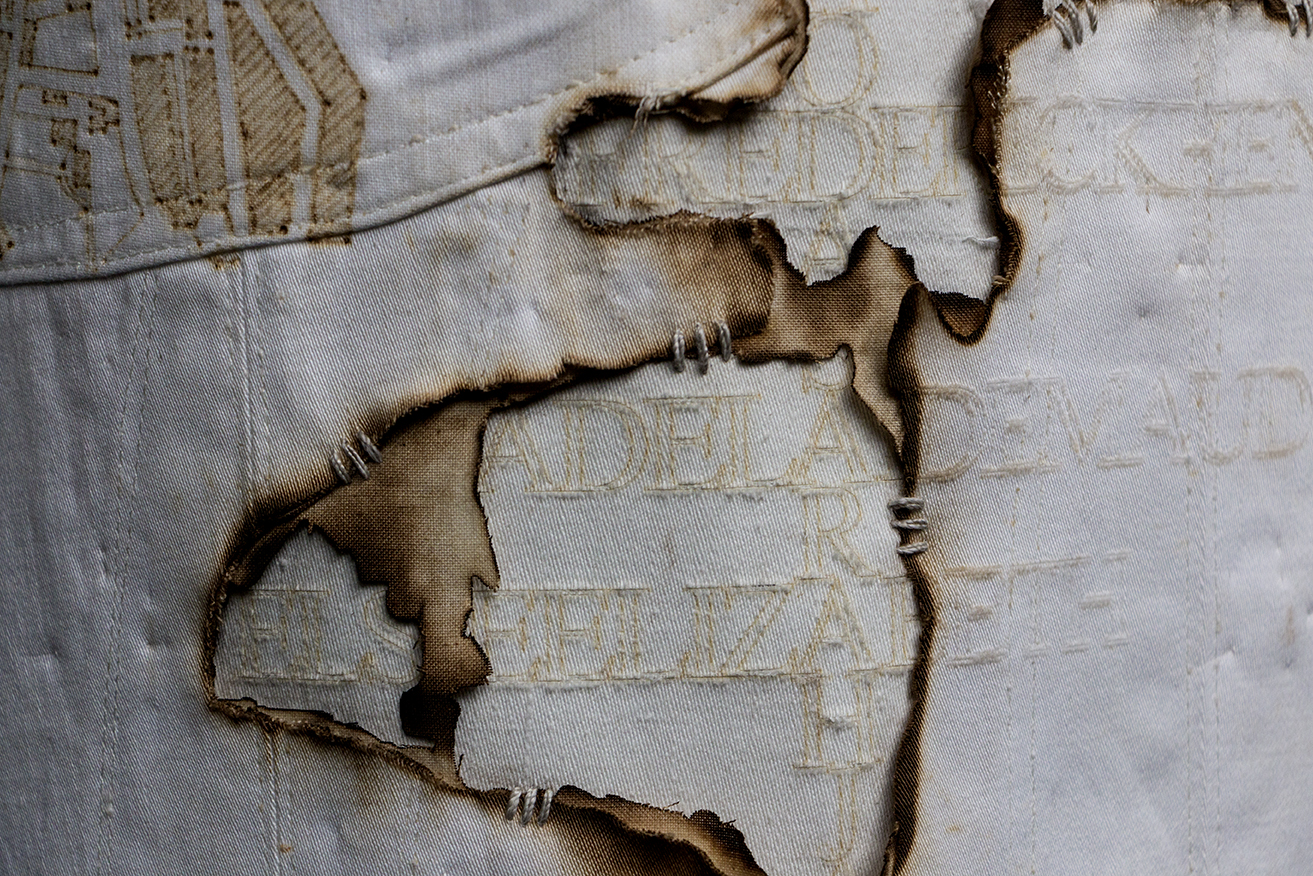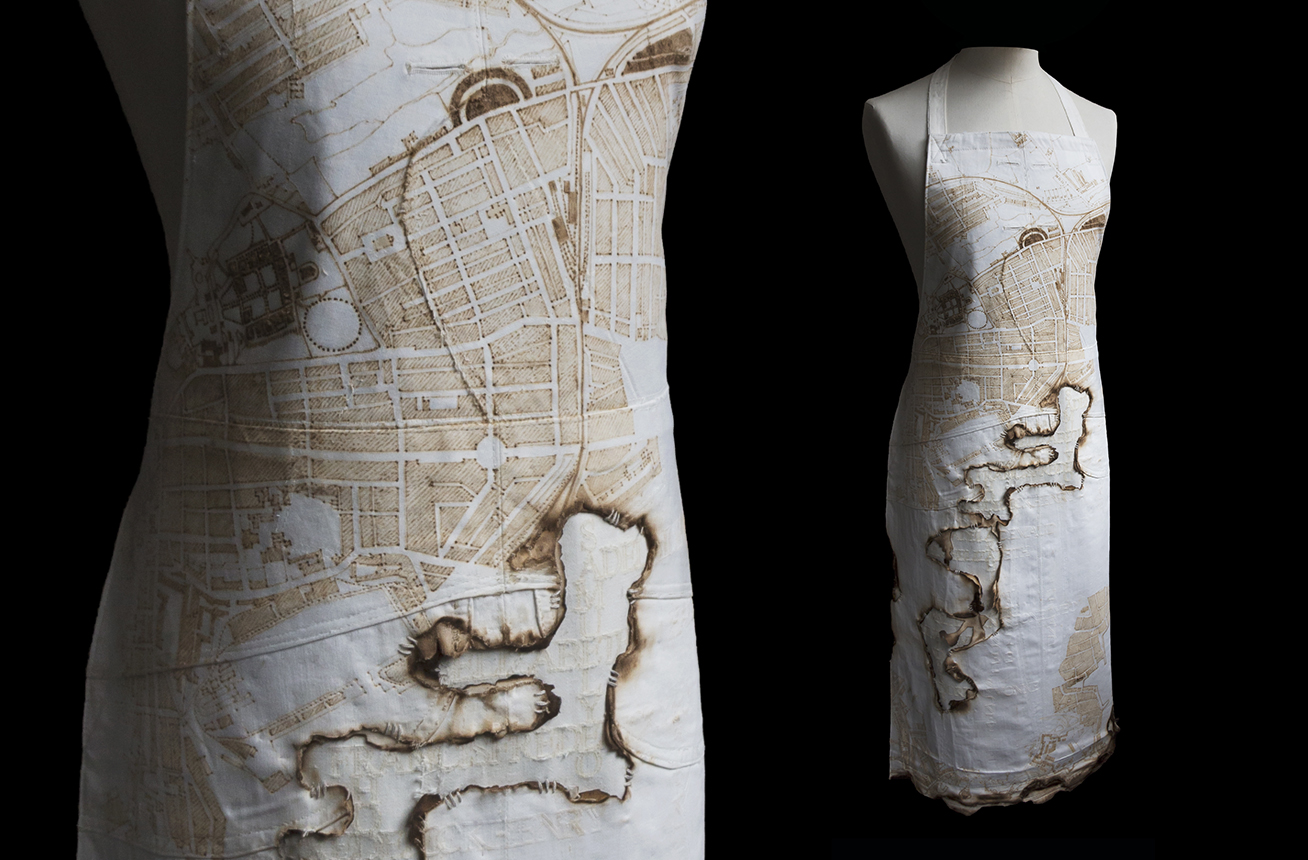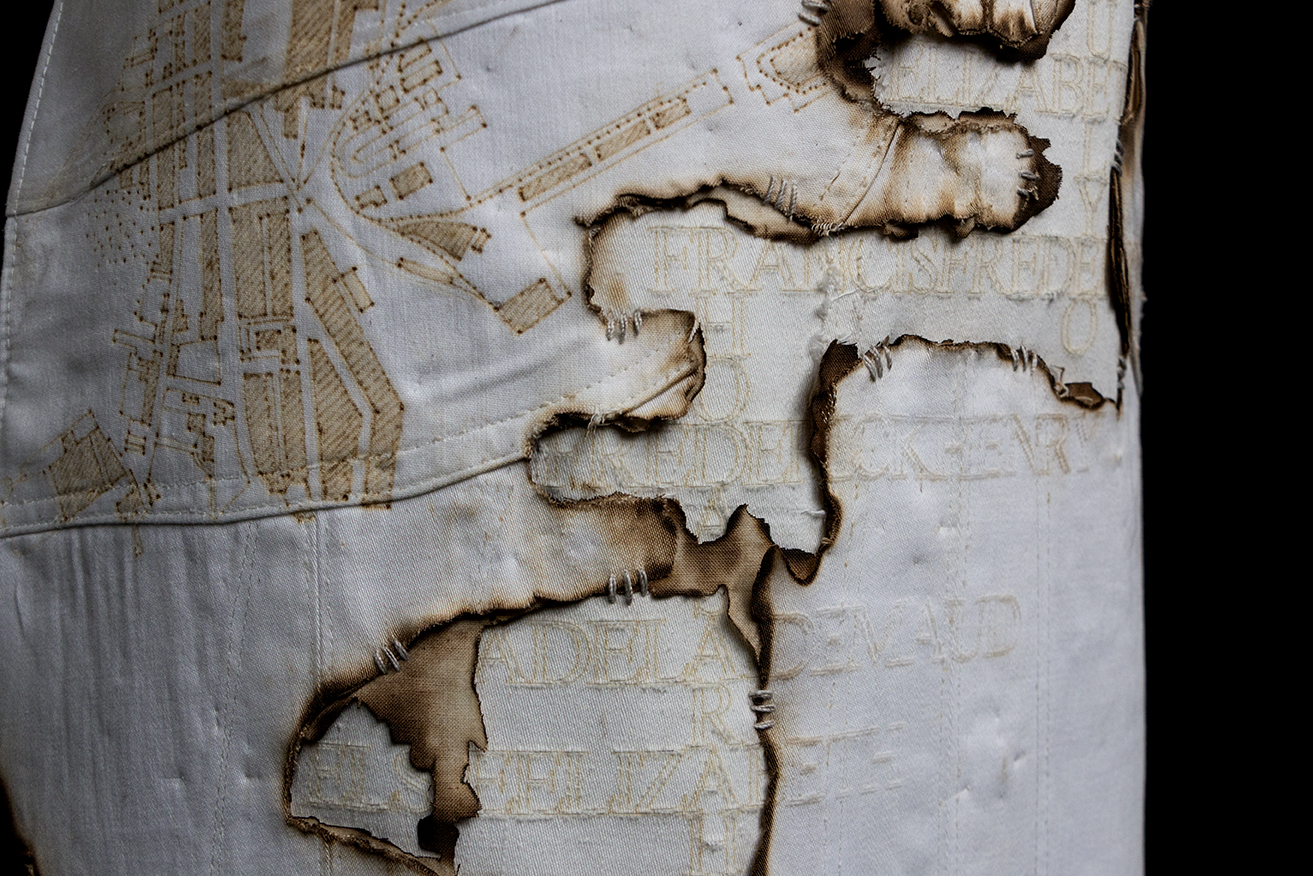Yeo. A Life Story
Exhibited as part of 'Jutland 1916', National Maritime Museum, Greenwich, London.
Since he first encountered the surgical story of WW1 Battle of Jutland veteran Walter Ernest O'Neil Yeo in the records of the Gillies Archives, Paddy has regularly revisited Walter's story. Researching Yeo's family history and interviewing his descendants, Paddy has pieced together the story of a humble, optimistic and remarkable man. Thanks to a series of residencies at King's College London, Exeter University and the National Maritime Museum London (NMM), along with public presentations of this work at venues including The Lowry Salford, NMM, Royal Albert Memorial Museum and The National Army Museum, Paddy has been able to share Walter's story. From the tragic of the death of his Father in the Serpent disaster, his schooling at the Royal Hospital School Greenwich, his naval service and and life changing facial injury aboard HMS Warspite, through to his pioneering facial reconstruction and post war experiences.
Using digital embroidery, applique, laser etching and hand draw pyrography, Paddy has recently expanded on Walter's story with the Yeo Tetraptych; a 4-part garment series encompassing Walter's life story. This along with new work about the story of fellow Jutland veteran and patient of facial reconstruction pioneer Sir Harold Gillies are currently on display at the National Maritime Museum Greenwich, London.
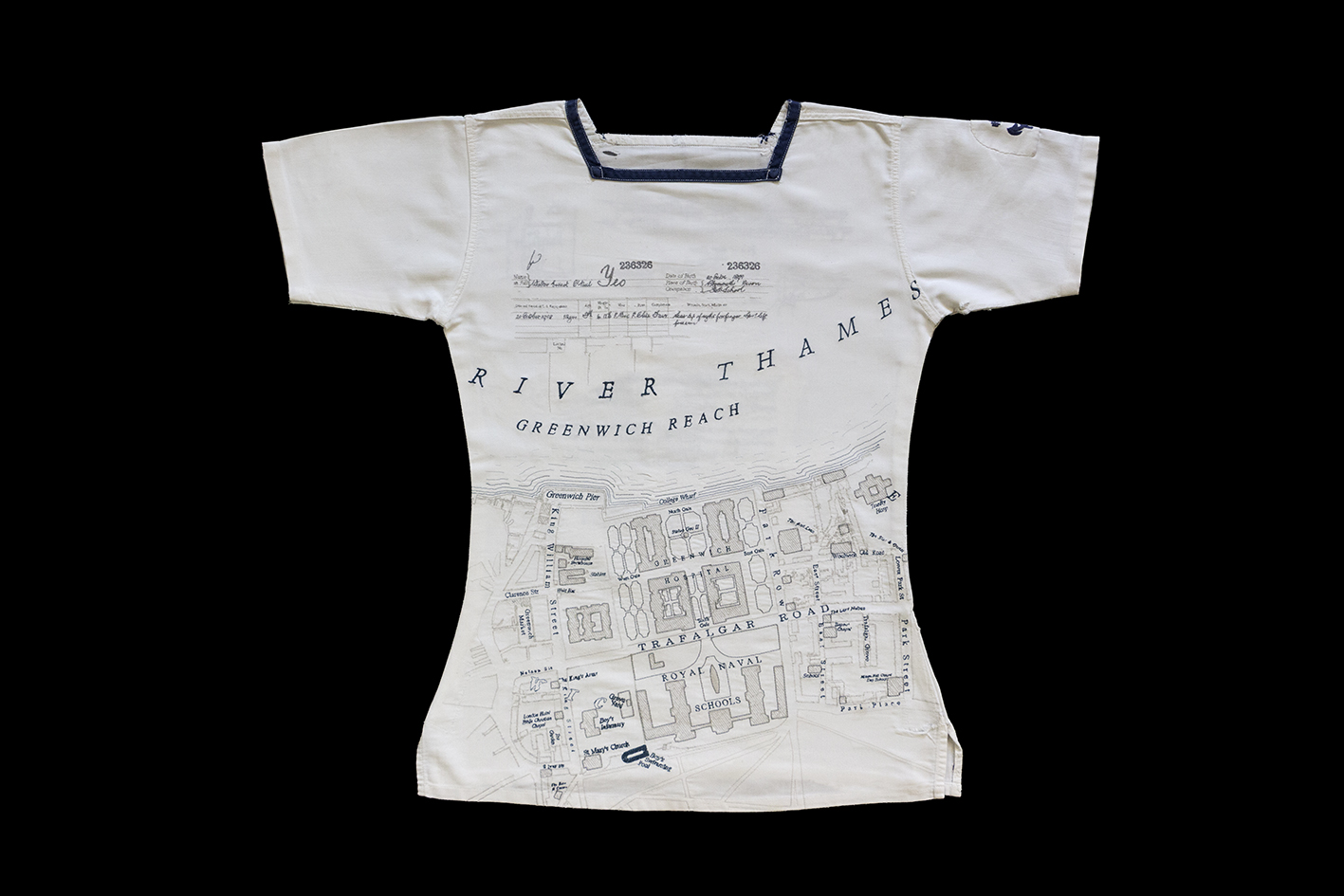




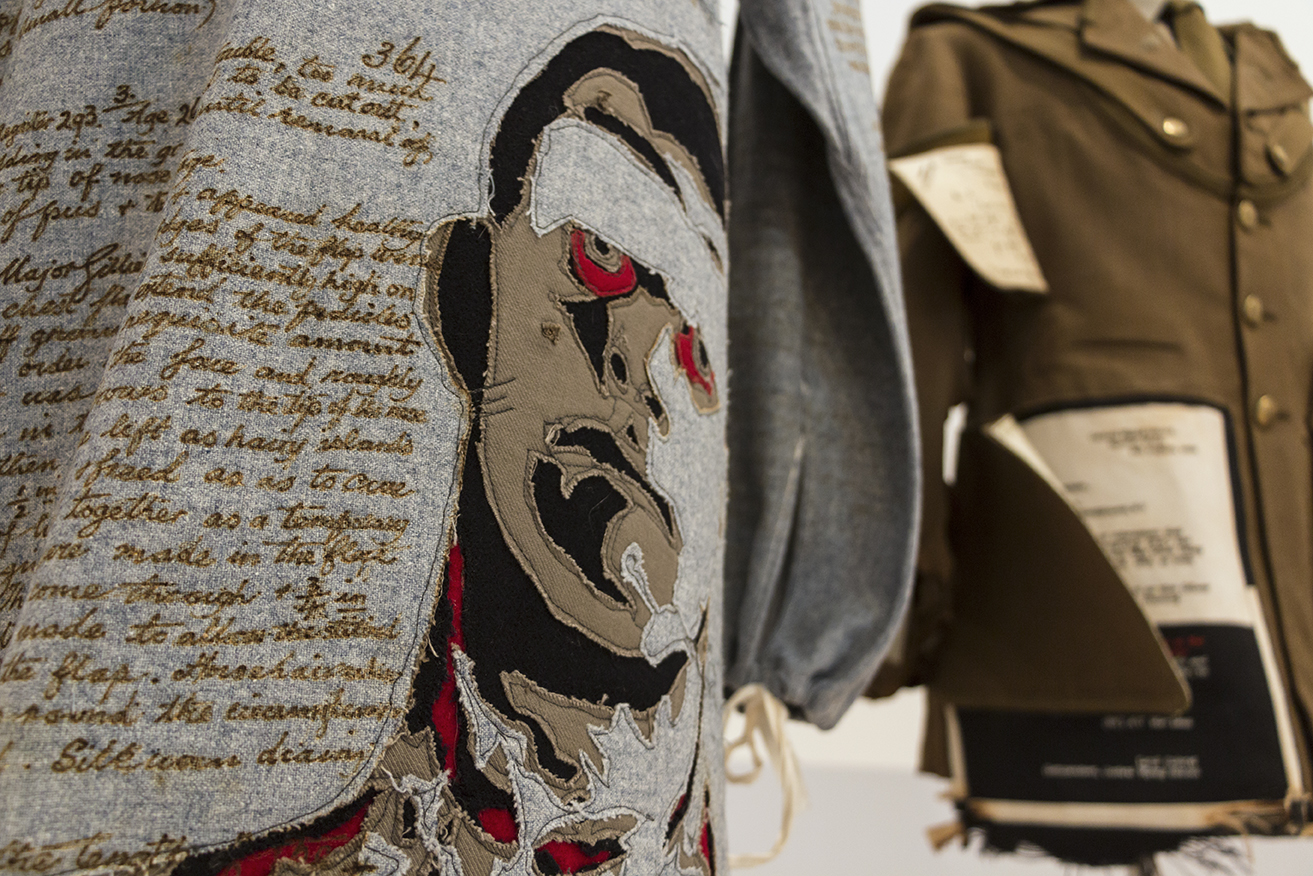

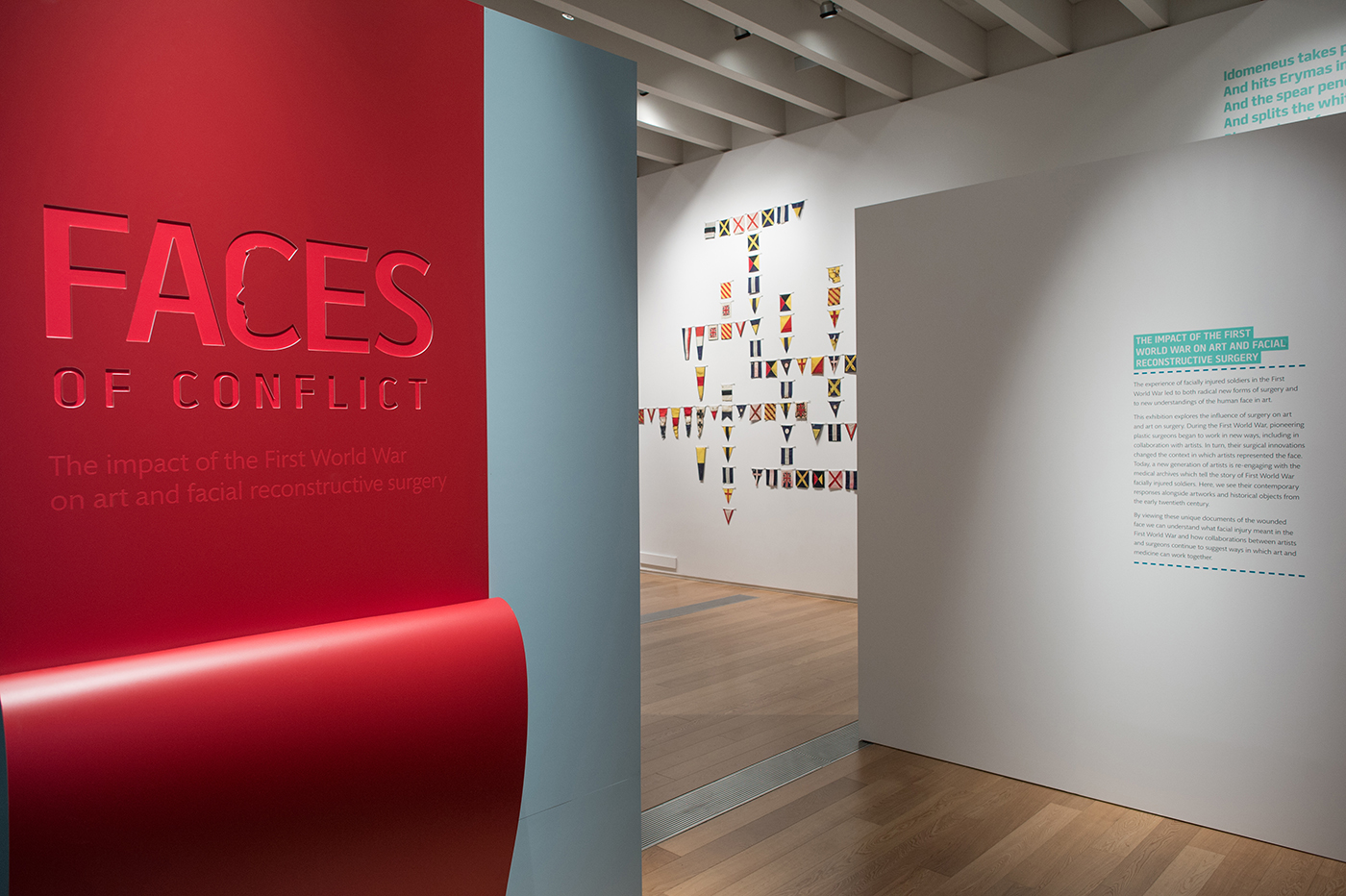
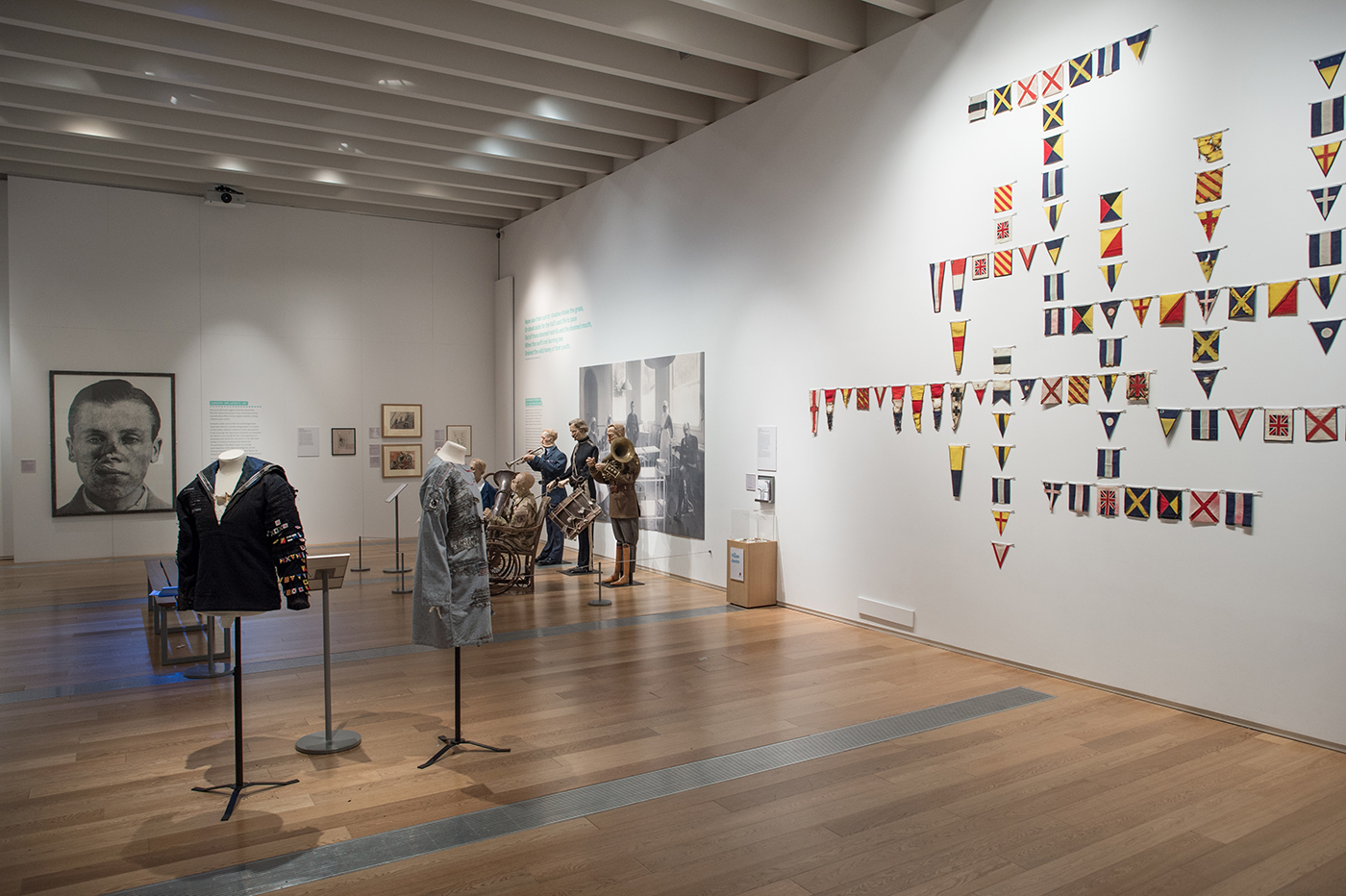
Yeo Tetraptych part 1
Sailor Uniform, digital embroidery. 2016-2017
As part of his residency at the National Maritime Museum London, Paddy is revisiting the story of Walter Ernest O'Neil Yeo and expanding upon Walter's story he first addressed in what has now become part 2 in this 4-part tetraptych. The undershirt introduces us to the early life of Walter and the death of his father Francis whilst serving aboard the HMS Serpent which sank on rocks off the Spanish coastline in 1890. His Fathers loss at sea deemed Walter eligible to enrole as an orphan to the Royal Hospital School Greenwich (now the National Maritime Museum), where his education continued and his Naval career commenced.
Yeo Tetraptych part 2
Sailor Uniform, digital embroidery, lazertran digital fabric print. 2005-2007
The success of Gunner Walter Yeo’s surgery can be seen as questionable in terms of aesthetic improvement but the procedure did improve the function of Yeo's vision. The Plymouth born son of a sailor lost at sea aboard the H.M.S. Serpent, Walter Yeo suffered cordite burns aboard the H.M.S Warspite during the Battle of Jutland. On admission to the plastic surgery unit and once his burns had healed, Gillies proposed lifting a chest flap to graft the whole area of skin across the eyes. The result was a graft that resembled a skin ‘eye mask’. Walters scars did lessen with time but by Gillies own admission, some of the surgical resolutions selected to treat particular injuries were defined by the popularity of a particular technique rather than by appropriateness. This could be regarded as applying to Walter’s surgery.
Yeo Tetraptych part 3
Vintage hospital gown, digital embroidery, applique, laser-etched trace overworked with hand drawn pyrographic detail. 2016-2017
As part of his residency at the National Maritime Museum London, Paddy is revisiting the story of Walter Ernest O' Neil Yeo by updating the hospital gown first created as part of his residency at Exeter University in 2014. This new iteration of the gown features in their entirety, the surgical notes kept by Walter's surgeon Sir Harold Gillies, replicated exactly as they were on the page. Laser etch created a precise trace of Gillies handwriting, over which Paddy applied hand drawn pyrography detail. The piece also includes a portrait of Walter mid way through surgical preparations for his major surgery, along with applique details of sketches translated directly from his surgical notes. Also featured are Gillies reflections on the relative success of the surgery and contributions from correspondents responding to a press appeal for family and friends to share their stories of Walter. The piece is pictured above in the 'Jutland 1916' exhibition at the National Maritime Museum alongside part 2 in the series.
Yeo Tetraptych part 4
Workwear apron assembled from naval garment salvage, applique, laser-etched trace overworked with hand drawn pyrographic detail. 2016-2017
Paddy draws a focus on Walter's post-war life based on meetings with his descendants. In addition to his skill as a crossword compiler (see Yeo Crossword below), teetotaler Walter became a pub Landlord and storesman at Monsen's Chandlery on Plymouth's Barbican. The apron takes its form from the basic general workwear garment of the type Walter may have worn. Naval garment salvage is used to create this canvas on which laser etched detail on maps of Plymouth featuring locations of significance are overworked with hand drawn pyrographic detail. Referencing both his skill as a crossword puzzle compiler and the criss-crossing of the streets of Plymouth, a washed out laser etch of Walter's family tree is also present, featuring family members, couples, offspring and siblings in chronological order stretching back from Walter's Grandparents to his own children through to marriage. Children intersect the mothers names in chronological order of birth.
Supported by: Wellcome Trust, Arts Council England, National Maritime Museum Greenwich, The Thompson Laboratory King's College London, Coventry University & the Exeter Sewing Machine Company.
Yeo Crossword
Salvaged signalling flag fabric, cotton, brass. 2014
Walter's story is additionally conveyed in 'Crossword', presenting key words and phrases from research gathered by Paddy over a 12 year period. The staring point for the research was Walter’s medical record held by Gillies Archives and now in the collection of the Royal College of Surgeons England. From this point, additional information was gathered from the National Archives Kew, newspaper appeals and respondents, Walter’s extended family and The Yeo Society. A key piece of information contributed by Walter’s Nephew George, was that Walter was a keen crossword compiler for national newspapers. By combining the crossword puzzle format with the naval signalling flags used by the Navy from 1913 and throughout WW1, Paddy managed to devise an artwork which required the viewers active participation in solving the puzzle to understand the story the puzzle conveys. Signalling flags are used to communicate from ship to ship or ship to shore over a distance and was an entirely appropriate metaphor for telling a story over a ‘distance of time, from the past’ so to speak.
Each flag in the crossword is unique in the set and are made from original salvaged and vintage naval signalling flags which have previously been used aboard ship. Each flag is constructed with subtle differences and are grouped by theme, context, construction method and fabric treatment to enrich the content of the piece. Wherever possible, details from the original flags from which these new flags were created have been included. Holes, hems, tears and dye run are all retained.



